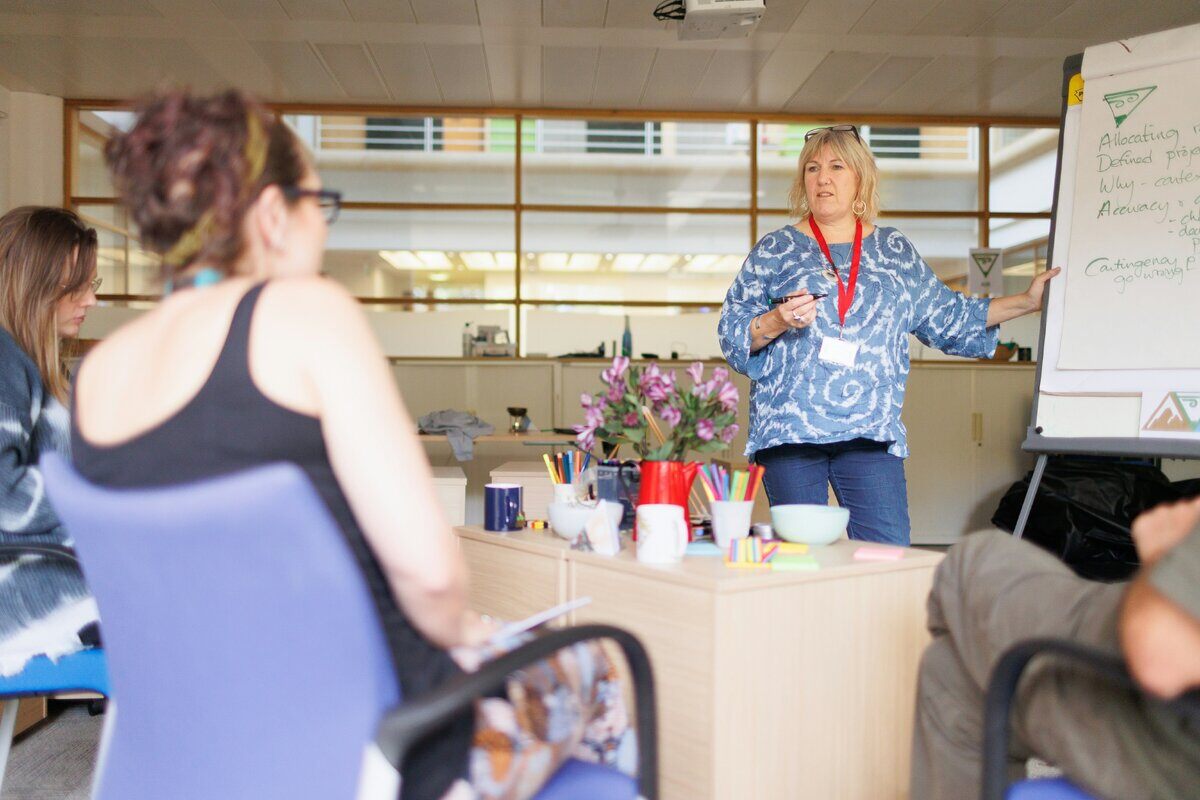
The 8 Limitations of Webinars as Learning Experiences and Strategies to Overcome Them
Over the years, webinars have been through their ups and downs.
In their early days, they were considered revolutionary.
Then, with the rise of free conferencing software like Skype and Google Hangouts, it looked like the time for webinars was over.
The end of webinars came nearest just before the pandemic, which breathed new life into them.
Today, it looks like the webinar is here to stay.
But, we will not be able to make the most of these tools if we fail to look at them critically.
To that end, we're going to examine the advantages and limitations of webinars and offer some proven solutions to overcome them.
First, a little history.
The Rise of the Webinar for Learning & Development
Where webinars meet their full potential is in the creation of online educational spaces.
That is, after all, a big part of why they are so wildly popular.
However, making the technology fit into this role has taken a lot of delicate work by the experts who design it and feedback from the users who understand it best.
A confluence of cultural shifts and high-level programming has brought us where we are today, and the process looked something like what follows:
Learning In-Person vs. Virtual Learning
Online learning platforms achieved widespread acceptance a good 10 years before webinars as a learning/teaching tool did.
That paved the way for these tools to find their rightful place in online education.
However, the debate over which is better, online or in-person learning, is still ongoing.
Classroom (in-person)
The advantages of in-person learning are not debatable, but neither are the disadvantages.
The ability to hear a person's voice with your own ears, see all of their body language, and enjoy the clarity of inflection all make communication easier and more natural.
Of course, in-person instruction cannot be re-watched unless it is being recorded.
Also, the problem of transportation ranges from inconvenient to insurmountable.
Networking (in-person)
Networking is more oriented toward professional circles, which tends to make the problems associated with transportation easier.
The distance problem is still a communication bottleneck.
When a meeting is important enough, only an in-person arrangement will do.
Still, a solution derived from information technology is usually preferable when appropriate.
Social Media (virtual)
Social media is great for many things.
When it comes to learning and teaching, it's pretty limited.
You could do quite a bit using messaging software, particularly in one-on-one question-and-answer meetings, comparable to when a student meets their professor during office hours.
These tools defy the need for the refinement that webinars bring to the table.
If the messaging is anything other than an advertisement or a casual one-off online meeting, social media usually won't cut it.
Webinars (virtual)
Finally, we come to the pinnacle of online learning/teaching, the webinar.
The one area where these tools don't stand up to their predecessors is in live, in-person communication.
Webinars beat all the other options in every other way.
They are more refined with many options for styling and format choices.
They overcome geographic bottlenecks by being online and by allowing many users to converse in a controlled and productive way.
They can also be recorded and reviewed later for more clarity.
Further, there's nothing stopping presenters and participants from using the other teaching modalities to seek greater clarity if and when needed.
Advantages And Limitations Of Webinars For Learning & Development
The key to getting the most out of any new, advanced tool is to see it clearly to understand its faults as well as its benefits.
To that end, we took a close look at webinar limitations for a clear perspective.
Advantages Of Webinars
- Convenient: Like any good online communications system, webinars are convenient. They virtually eliminate all communications bottlenecks, except one: building your audience. That is up to you.
- Accessible: The one shortcoming to the accessibility of webinars is the fact that your viewers or participants need to be motivated to join. This is done through outreach, or mandates/incentives in the case of a workforce. Short of that, access to them is just a click away.
- Affordable: While webinars are sophisticated to the point where a free model isn't feasible, they remain affordable for the same reasons that more basic tools like Skype are free. That reason is that they are practically unlimited in their ability to be scaled up, making their potential value unlimited.
- Stylistically customizable: Where webinars really distinguish themselves from free conferencing tools is they give you the ability to format, design, and style them to your liking. You can optimize them stylistically based on performance metrics, and craft them to suit your tastes, branding, and audience.
Limitations Of Webinars
The disadvantages of webinars are a real thing, and those limitations have to be worked with.
However, we are certain that if you carefully consider the following disadvantages, you will be able to mitigate the drawbacks of webinar tool sets and deliver impeccable learning experiences.
1. Information Does Not = Learning
As any good educator should know, just because you have provided the information your learners require to succeed does not mean they have absorbed, understood, or even been properly exposed to it.
Naturally, this is what testing is for, but there are problems with that as well as we will see.
To be fair, this is not a weakness of webinars in particular.
Rather, it is a potential weakness of any teaching/learning environment.
2. Information Bottleneck Solutions
The first solution that comes to mind is testing.
There are many ways to accomplish testing, and not every method will be ideal for certain learner groups and certain types of information.
In general, the way to get the most out of testing is to use as many testing methods as is reasonable.
The second solution is likely to be the strongest. This is repetition.
One way to do this is to look at an outline of a course of learning and review it with your students.
This is similar to looking through the table of contents of a book before reading, considering the chapter titles, and reading the forward.
Likewise, following up with a summary of materials when modules are completed is another good way of increasing exposure to information.
Finally, you might perform a live quiz, asking key questions and letting learners respond in real time.
Of course, there are many more workable solutions to the exposure bottleneck problem.
Your job as the instructor is to make the most out of review and preview methods, and to be creative.
Of course, the learner also has a responsibility to learn well.
So, don't be afraid to remind them of the benefits of quality study habits.
3. Evidence Of Learning Is Difficult To Assess
As mentioned, there are problems with testing.
This is especially true when your learning audience is your company's workforce.
In colleges and public schools, students are notorious for learning the material just long enough to pass a test.
After the test is finished, even the best learners will often cease to retain the material.
Once again, this is not a failing of webinars as such.
Rather, it is a problem any teacher in any learning environment must learn to cope with.
4. Assessment Solutions
One way to deal with this is to give learners access to an outline of upcoming tests.
You can help them perform on tests and retain information by going over what will be tested and what has been tested.
Another way to do this is to incorporate live quizzes.
Our final approach to this problem might be to offer pretests.
A pretest should be like a sample of the real test.
It should give them a heads-up for the real test and serve as reinforcement for the material.
Again, it must be said that it is up to the learner to properly onboard the information you provide if they hope to benefit from it fully.
Be sure to remind learners of this.
Further, it may be advantageous to provide incentives to keep students competitive and get optimal results, especially in a corporate setting.
5. Can't Practice Concepts Live With An Instructor
This drawback of virtual learning environments is not exclusive to webinars.
It is the fact that the learner never has access to live or in-person help from the instructor.
In colleges, professors set aside extra classroom time and post their office hours for the expressed purpose of offering live instructor help.
Unfortunately, we cannot do this online.
Solutions for the no-contact problem
We can deal with this baked-in weakness of online learning by doubling down on the strengths of virtual classrooms.
These include the ability to review material at will, access to additional resources, and the freedom to review materials on their own time.
One excellent solution is for learners to create mp3 recordings of lectures and to listen to them in the car, at the gym, while washing dishes, as they fall asleep, and so on.
This solution, in our opinion, is one of the most powerful learning techniques open to just about any learner today, and we always recommend making the most of it.
6. Zoom Fatigue
This is a tough challenge for any online learning platform.
There's also the fact that overexposure to screens can be a serious health risk.
The only workable way to deal with this is to encourage your learners to take at least a five-minute break every hour.
Using mp3 recordings is, once again, a great way to get away from the screen while still learning material in a way that is proven effective.
7. Distractions Or Multi-Tasking
Another challenging drawback of any online learning experience: distracted attendance can be especially hard to prevent.
You may address this by holding live lectures where you occasionally call on random learners, just as teachers do in traditional classrooms.
Another important way to mitigate this problem is to make sure your learners understand that they are responsible for learning and retaining the information.
8. Passive Communication
The fact that online communications are easy to "tune out" is another tough one.
It is up to the instructor to be as engaging as possible.
However, once again, learners must put in an effort to learn, as well.
This is not something you can do for them, but you can remind them of the benefits of paying attention.
Reimagining The Webinar Learning Experience
Naturally, we have more than just suggestions when it comes to dealing with these issues.
Process To Designing A New Value Proposition
One way to prep your audience for the accountability and assessment bolstering we recommend is to incorporate these into your up-front value proposition.
In this way, you will make clear to the learner that while you can offer an excellent learning experience, the learning part is up to them.
"Learner -> Job to be done -> Value"
They have a job to do, and they should know they are going to be part of the evolution of the learning experience refinement process.
Our design framework is built to communicate the fact that the real value they can expect will only come when they take the job of learning seriously.
Creating A New Virtual Learning Experience
We have designed our webinar playbook to address many of the potential sticking points of online learning experiences.
So, we encourage you to use it and make the most of it.
Remember, we're here to walk you through the creation process.
Building In Learning Assessments & Practice Capability
You will find that the playbook helps you to incorporate all of the tips we've laid out here and more.
It will make it easy for you to create more interaction and engagement within your webinar designs.
We understand this is a lot to take in.
But don't worry, our team and our playbook are well-equipped to serve as your guide.
We'll make sure you get all the power out of your webinar teaching platform that you need to build an excellent learning experience.






